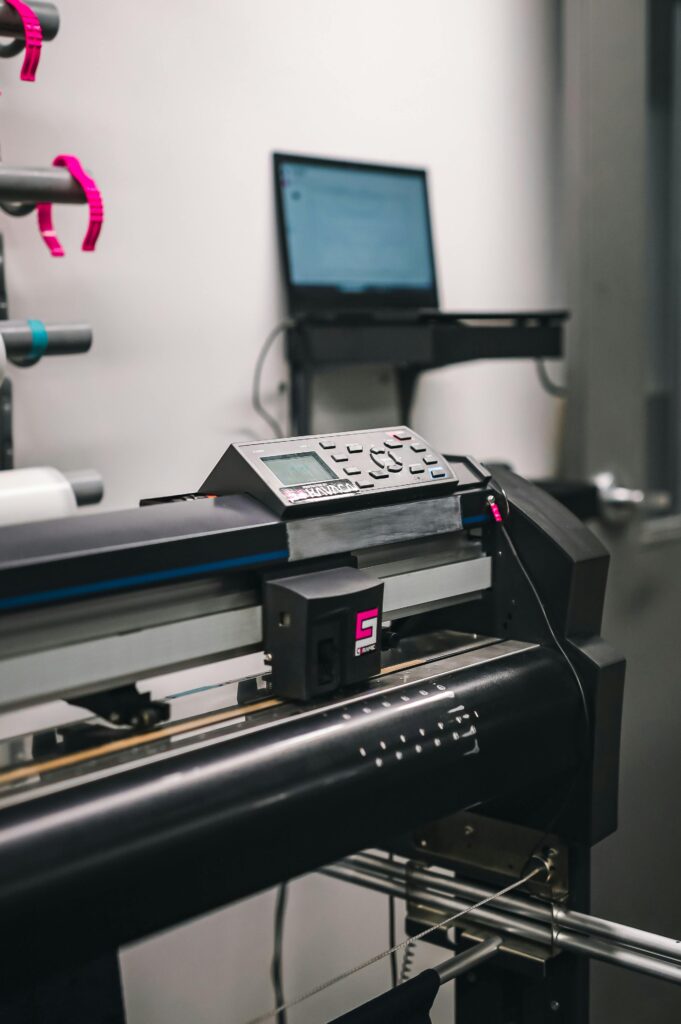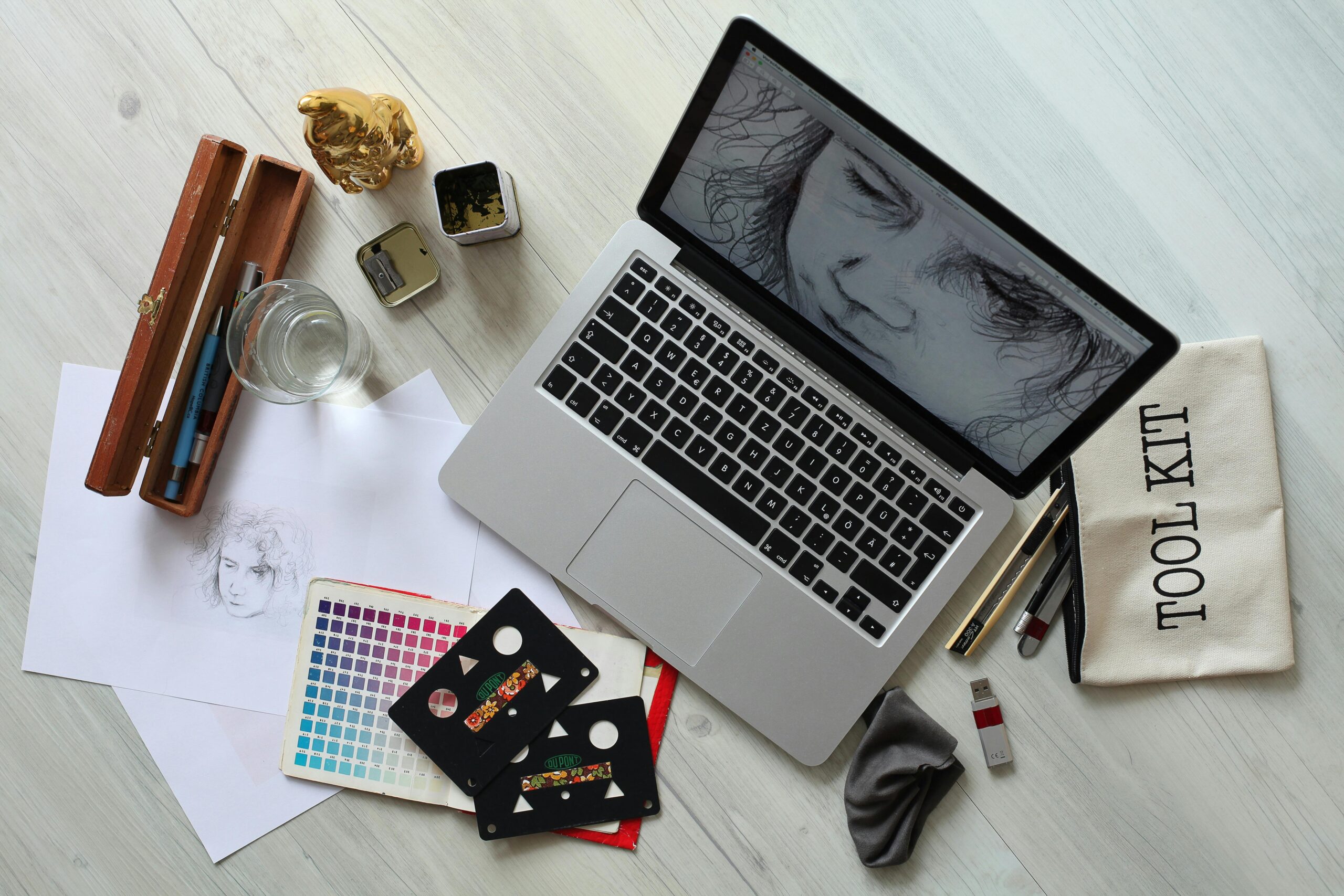However, as technology advanced, so did the possibilities of graphic design. The digital revolution brought with it new tools, platforms, and creative methods that shifted design practices from print to the digital landscape. Today, graphic design is omnipresent in all aspects of life—from websites and apps to marketing campaigns and social media visuals—making it an essential part of visual communication in the modern world.
Graphic design serves as the bridge between art and communication, enabling the creation of visually compelling messages that capture attention, convey information, and evoke emotions. Over the years, graphic designers have had to adapt to new tools and technologies to meet the ever-evolving demands of business, branding, and media. With the advent of digital platforms, the role of graphic designers has expanded to include website design, mobile interfaces, digital advertising, and multimedia content.
This article will explore the history of graphic design, tracing its evolution from the early days of print media to the digital age. It will highlight how technological advancements, such as the invention of digital tools and the rise of the internet, have shaped design practices. Furthermore, the article will examine key design movements and innovations that continue to influence the graphic design field today.
- The beginnings of graphic design: The print era
- The shift to digital: The digital revolution and the 1990s
- The growth of digital design: The 2000s to present
- The future of graphic design: Trends and innovations
- Conclusion
The beginnings of graphic design: The print era
Graphic design’s roots can be traced back to the invention of the Gutenberg Press in the 15th century, which revolutionized printing and made it possible to mass-produce written material. This innovation laid the groundwork for modern graphic design, as it allowed for the production of books, pamphlets, and newspapers that required visual organization. Early printed works relied on carefully arranged type and illustrations to create clear, readable, and attractive designs. Printing was the primary means of disseminating information for centuries, and it set the stage for later developments in graphic design.
Typography played a crucial role in early graphic design, as the design of typefaces and their arrangement in print became one of the most significant elements of visual communication. The design of books, newspapers, and posters required a balance between form and function—ensuring readability while creating an aesthetically pleasing composition. Typefaces were carefully chosen for their legibility and ability to evoke specific emotions, setting the tone for the message conveyed. Print media also relied heavily on illustrations and engravings, which were hand-drawn or carved to enhance the textual content.
Various design movements shaped the development of graphic design during the 19th and early 20th centuries. For example, Art Nouveau, which emerged in the late 19th century, emphasized flowing, organic forms, intricate linework, and decorative elements, influencing poster design and typography. Bauhaus, a design school founded in the early 20th century, introduced a minimalist approach to graphic design, focusing on functionality and geometric simplicity. Swiss Design also emerged, characterized by a clean, grid-based approach to layout and a focus on clarity and legibility, all of which helped establish the foundation for modern graphic design.
The shift to digital: The digital revolution and the 1990s

The Rise of Digital Tools
The 1990s marked a turning point in the history of graphic design. The advent of personal computers and software like Adobe Photoshop, Illustrator, and PageMaker allowed designers to move away from traditional methods and explore the possibilities of digital design. These tools offered new ways to manipulate images, experiment with typography, and create layouts, enabling designers to work more efficiently and with greater flexibility. With digital design tools, designers were no longer limited to physical media and could easily iterate on their designs, leading to a more experimental and creative approach to graphic design.
The Impact of the Internet
The rise of the internet in the 1990s and early 2000s changed the landscape of graphic design forever.
With the explosion of web development and online advertising, designers were suddenly tasked with creating digital experiences—websites, email campaigns, and online banners—that were visually appealing and functional. Web design introduced new challenges, such as creating designs that would work across various browsers and screen resolutions. For the first time, graphic design was not confined to physical spaces but had to account for the dynamic, interactive nature of digital platforms.
Transition from Print to Web Design
The transition from print design to web design wasn’t immediate, and it came with its own set of challenges. While traditional print design followed static, predefined layouts, web design had to consider user experience (UX), interactive elements, and responsive layouts that adapted to different devices. Early web design often took cues from print design, with websites mimicking the layouts of magazines and newspapers. However, as web design principles evolved, designers began creating more interactive, user-friendly interfaces that prioritized navigation and accessibility.
The growth of digital design: The 2000s to present
- The Role of User-Centered Design
As digital design matured, the focus began shifting toward creating intuitive and user-friendly experiences. The rise of user experience (UX) design in the 2000s emphasized the importance of designing for the end-user’s needs, behaviors, and interactions. Designers no longer just created visually appealing layouts; they were now tasked with ensuring that the design facilitated easy navigation, quick access to information, and overall usability. UX design became an essential part of creating websites, apps, and digital platforms, and it reshaped how graphic designers approached their work.
- Mobile and Responsive Design
With the introduction of smartphones and tablets, designers faced new challenges in adapting their designs for smaller screens. Responsive web design emerged as a solution, ensuring that websites would adjust seamlessly to different screen sizes and orientations. Designers began thinking about how their designs could be viewed across multiple devices, from desktop computers to smartphones and smartwatches. This shift to mobile-first and responsive design helped create a more versatile approach to graphic design, pushing designers to innovate and create digital content that looked great on any device.
- Visual Identity in the Digital Age
As businesses increasingly relied on digital platforms to engage with customers, visual identity and branding became even more critical in the digital age. Companies needed to create strong, consistent visual identities across various digital channels, including websites, social media, mobile apps, and digital advertising. Graphic designers played a key role in this, designing logos, color schemes, typography, and layouts that resonated with audiences and reinforced brand identity across different platforms.
The future of graphic design: Trends and innovations
Artificial intelligence and automation are becoming more integrated into the design process, offering new possibilities for efficiency and innovation. AI-driven tools are now able to generate layouts, suggest color schemes, and even automate repetitive tasks like resizing or reformatting designs for different platforms. These technologies free up designers to focus on more creative and strategic aspects of their work while ensuring that designs are optimized for different formats.
With the rise of augmented reality (AR) and virtual reality (VR), graphic designers are now exploring immersive digital experiences. From interactive advertisements to 3D environments, AR and VR present exciting opportunities for designers to engage users in entirely new ways. For example, brands are using AR to create interactive shopping experiences, where customers can visualize how products will look in their own homes before purchasing.

Graphic designers are now tasked with creating these virtual environments, which require a deep understanding of both design and technology.
In recent years, there has been a growing awareness of the need for sustainable and ethical design practices in the graphic design industry. As environmental concerns become more pressing, designers are being called upon to consider the environmental impact of their work, from the materials used in print design to the energy consumption of digital media. Designers are also increasingly considering the social and cultural impact of their work, ensuring that designs are inclusive, respectful, and socially responsible.
Conclusion
- Summary of Key Points
Graphic design has come a long way, evolving from traditional print-based methods to embrace digital tools, the internet, and interactive technologies. The transition from print to digital has transformed how designers work, requiring them to adapt to new platforms and address the needs of modern consumers. From the first digital design tools to the rise of mobile and responsive design, graphic design continues to evolve in response to technological advancements and shifting consumer expectations.
- Reflection on Graphic Design’s Impact
Graphic design is no longer just about creating visually appealing images; it is a critical part of communication, branding, and user experience. Whether in print or digital formats, design plays a pivotal role in shaping how we interact with information and brands. As the digital world continues to grow, graphic design will remain a vital force in making information more accessible, engaging, and aesthetically pleasing.
- Looking Forward
The future of graphic design looks bright, with exciting developments in AI, AR/VR, and sustainable design practices. As new technologies emerge, graphic designers will continue to innovate and find ways to integrate these tools into their work, creating designs that resonate with audiences in more dynamic, immersive ways. The evolution of graphic design is ongoing, and its role in shaping the future of communication, entertainment, and branding will only continue to grow.








